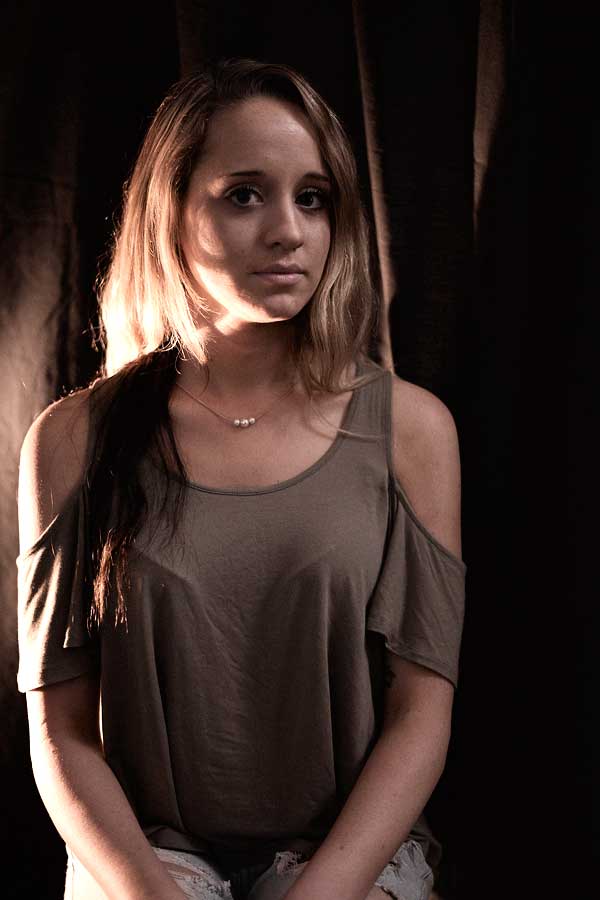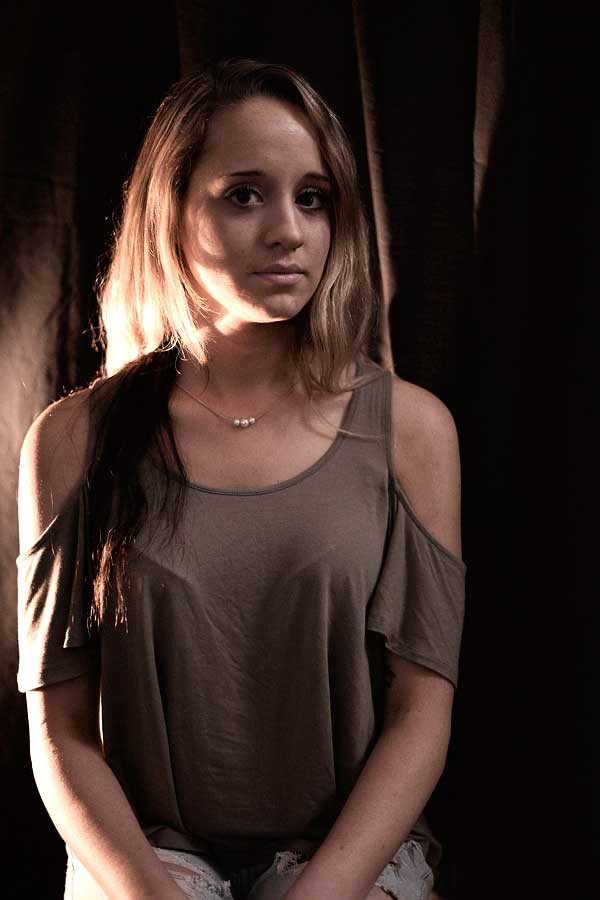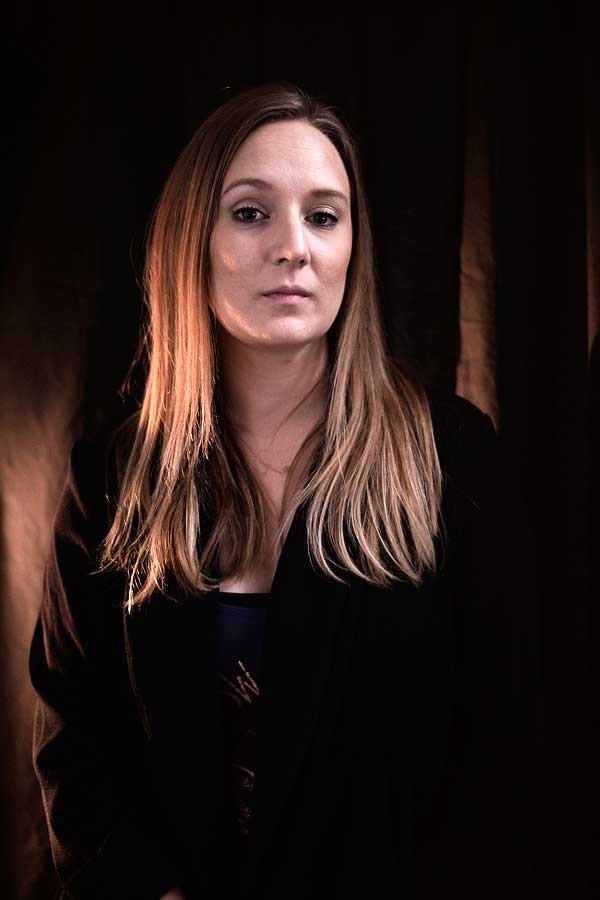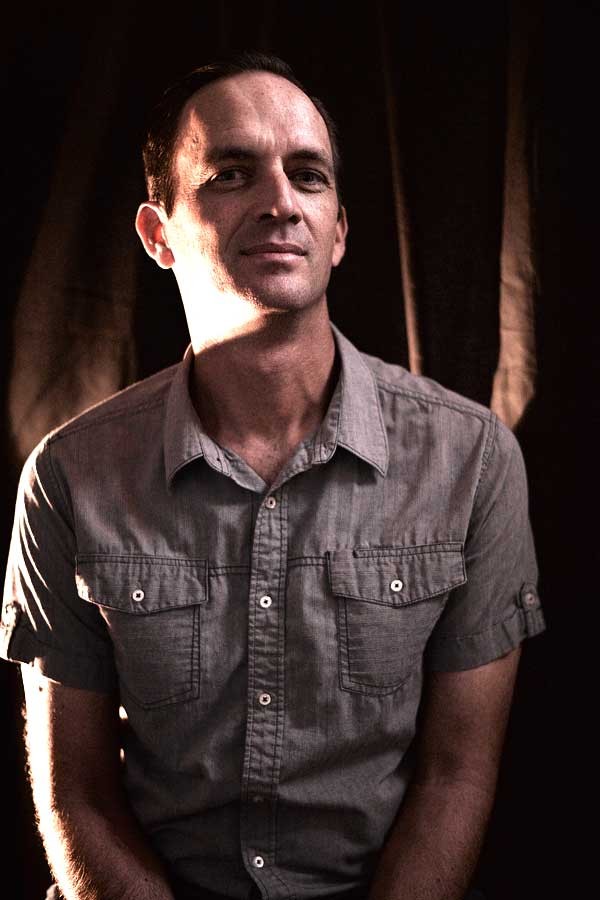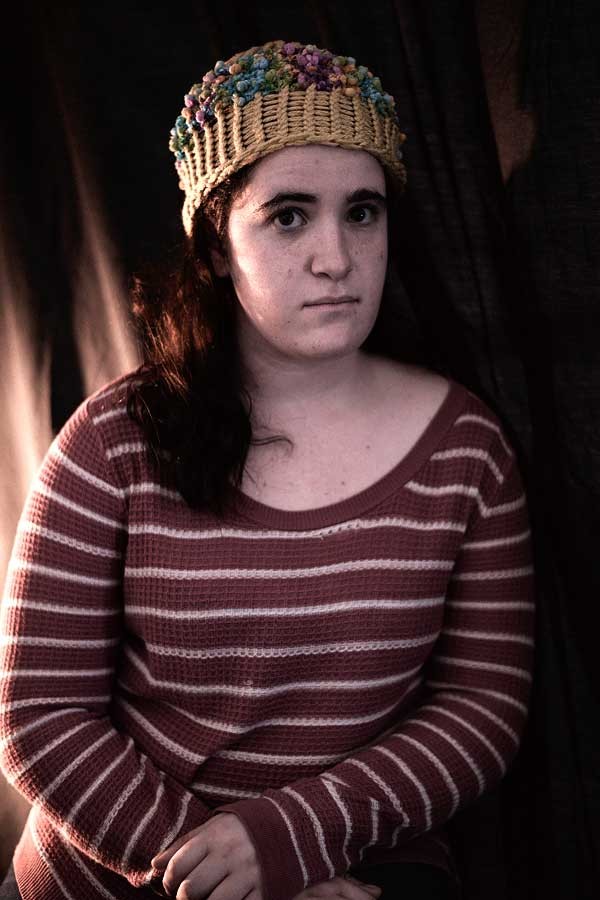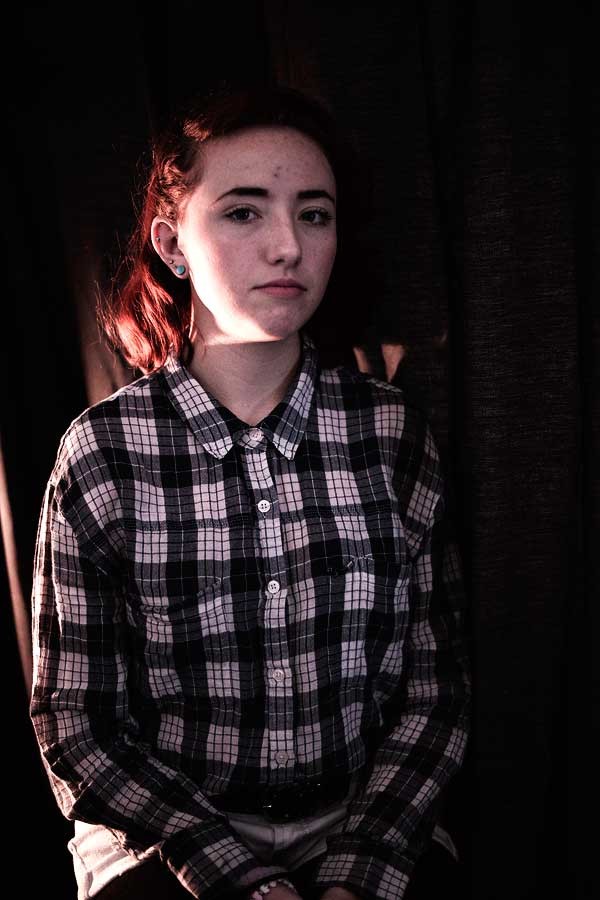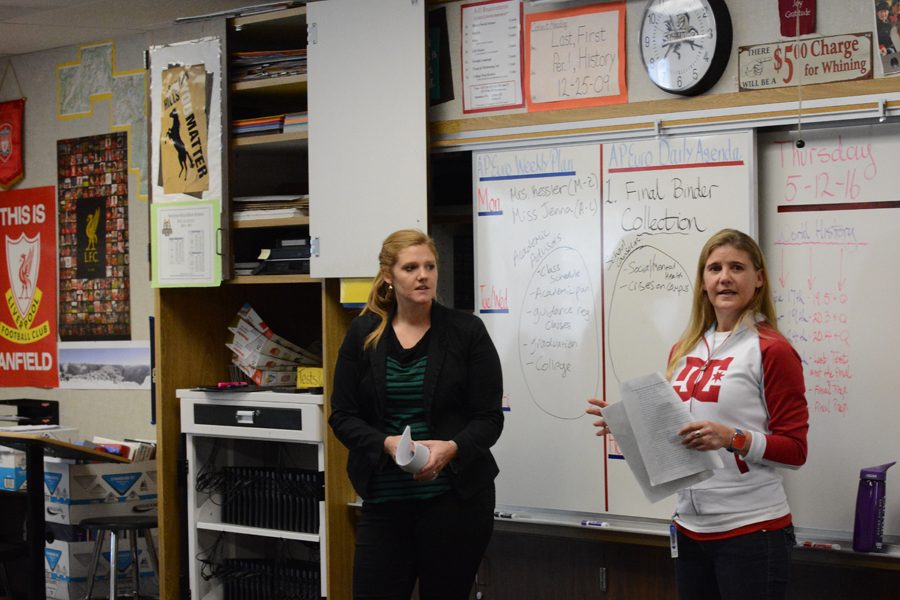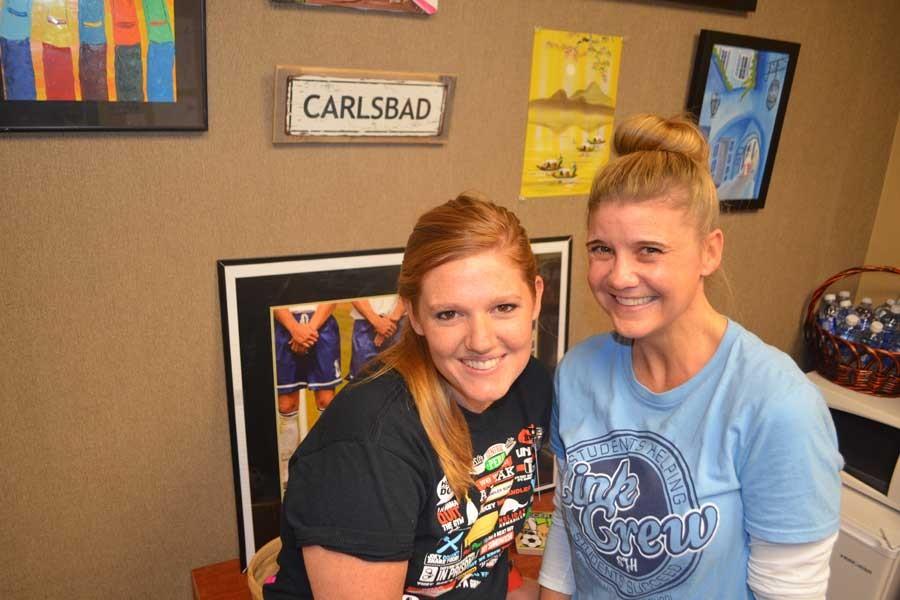Your donation will support the student journalists of San Juan Hills High School. Your contribution will allow us to cover our annual professional memberships as well as equipment and other costs associated with bringing you high quality student journalism.
Suicide
April 1, 2016
Olivia Johnson
Olivia Johnson’s life, like countless others, has drastically been altered by suicide, for her father killed himself when she was just in middle school. Olivia grew up in Nebraska with her father and mother. Her father was a severe functioning alcoholic, and when Olivia was twelve her parents divorced.
As Olivia grew up she began to realize that her father was ill. While their relationship remained strong, alcohol was still the center of her father’s world, Olivia describes that “he would drink just to feel okay, and get sick if he didn’t.”
She recounts that in rehab, “He looked like he had died inside, his eyes were empty because not only did he lose his wife, the alcohol had caused him to lose his job, and he was at rock bottom”.
At the time, Olivia’s mom was considering a move to California because of her husband’s erratic behavior. Finally, the threats and excessive drinking resulted in a permanent move.
Mr. Johnson’s first attempt to end his life was when Olivia’s mom handed him divorce papers. Olivia was home alone with her dad and he was behaving belligerently, drunk, in the living room insisting that she must stay in her room. He reminded her that he loved her, and if she heard fireworks to sleep through it.
Saving him an hour later from self-harm injuries that could have ended his life, Olivia was so scared of what her father had really become.
After his failed suicide attempt Olivia’s father sunk into a deeper depression and lost the custody battle for Olivia. He moved back in with his parents while Olivia and her mother made a permanent home in California.
Olivia was able to find a way to forgive her father, but was scared of the person he was. Daily phone calls and visits over Christmas break, she and her father formed a healthy long-distance relationship. Despite finding employment, he remained extremely depressed and the emptiness in his eyes never really appeared to be filled. Olivia was starting a new life in California, and her communication with her father began to decline.
Olivia’s birthday came around and while she was in school, she missed a call from her father. Unknown to her, there wouldn’t be an answer when she called him back. He texted her, “Be the big fish in the pond, don’t forget me, I love and will miss you”. Reading it in a different tense than he had intended, Olivia didn’t reply right away. Later that night she attempted to contact him, but there was no answer.
Coming home from Olivia’s birthday dinner, her mother got a life-changing phone call. Olivia’s mother explained that her father fatally shot himself at the Memorial Park located in her hometown in Nebraska.
She grew up in Memorial Park, that was their spot, he pushed her on the swings there. He left a note for her that said, “I’m sorry I let you down, Olivia. My possessions remain with you; make me proud big fish all my love, Dad.”
”I can’t even tell you the emotions I went through,” Olivia said.
Olivia further elaborated on the huge amount of grief and heartbreak she felt, for she even denied his death and grieved for a long time before achieving acceptance.
She admits to being stuck in the fourth stage of grief, bargaining, and and reveals that she said, “God I will never sin again, will you bring him back.”
While she learned a lot from counseling there is no full recovery, and she misses her father everyday. For Olivia, “suicide is the most selfish thing a person could ever do.”
Through friends Olivia made a family of her own, and that “friends that I can count on more than blood,” are what really saved her.
From this tragedy, Olivia has an insight and a perspective that enables her to aid others in similar situations. It has allowed her to mature, but no matter what her father’s suicide continues to challenge her conscious and mood on a daily basis.
Mrs. Beilstein
Cambria Beilstein, current drama teacher at SJHHS, grew up in San Diego, went to Grossmont High School and graduated in ‘04. San Diego was a predominantly conservative community at the time, and excluded members of the LGBTQ+ community.
Despite the obvious opposition from community members and classmates,Camyron, one of Beilstein’s best friends, came out as a bisexual.
Camyron began exploring her sexuality around her freshman year, and consequently faced harsh responses from her peers.
“She was an open person and never pushed anyone away. She was always open about how she felt about things, loved Harry Potter, and was a really caring human being. She started trying to find herself, and it was not reacted to well at my high school,” said Beilstein.
As a result of her progressive attitude Camyron was constantly bullied. She didn’t face physical abuse, but instead encountered snide comments as people talked about her behind her back. Others even went as far to say that she was lying about her sexuality in order to be trendy. From Beilstein’s perspective, however, it didn’t seem to impact Camyron at all; she just brushed it off.
“We thought that everything was fine, that she was going through it, and it was going to be okay. We never saw her cry or get sad and depressed.”
In addition to her issues at school, her mother was often occupied with parties and social events. As a result, Camyron was left to take care of her younger sister, Paisley, and assume an adult role at home. “I think she was a bit overextended,” Beilstein added.
Over the winter break of her sophomore year, Beilstein was approached by a friend from Camyron’s old school. The friend was asking Beilstein questions about Camyron, like what Camyron was upto and how she was doing.
“I said that I hadn’t heard from her all of break and that I had assumed she was out of town. Her friend then told me that she couldn’t get ahold of her, that she wasn’t at her house and that nobody knew where she was.”
They soon learned that Paisely, Camyron’s seven year old sister, found Camyron on the floor of her bedroom after she had fatally shot herself.
Beilstein and her friends were completely shocked by this. They weren’t aware there was a problem because Camyron had always appeared strong and stable. If any of their friends had a problem, she was always there to help them.
“Sometimes I think the most emotionally vulnerable people are those that are the most open to helping other people, because they aren’t processing what they’re [personally] going through.”
Camyron left three different notes, one for her mother, one for her sister, and one for her friends.
In the note to her friends, she explained that her suicide wasn’t their fault and why she had hidden her depression. Camyron didn’t want to burden them with her feelings.
“It didn’t help. We all still felt like it was our fault, that we could have seen something. We wished that she had told us so that we could have helped her. And that’s something that I think I struggled with for a long time.”
The fact that Camyron kept this a secret was difficult for Beilstein and her friends to handle; they couldn’t understand why she didn’t trust them enough to confide in them. Ultimately though, it showed them how caring Camyron really was. “She really didn’t want to be a burden on anyone else [by telling them],” added Beilstein.
Watching the impact the suicide had on Camyron’s family, Beilstein realized firsthand that suicide and issues relating to it hurt so many people.
“Her mom had a really hard time and I’m sure Paisley did too. It’s like a ripple; suicide affects everybody. It affects a lot more people than you might think, even the outward community. In Camyron’s case, even some people who barely knew her were really affected.”
She explained that Camyron’s mother went completely downhill, partying so much that Paisley had to be removed from the home by Child Protective Services and placed in foster care.
This experience has shaped many of Beilstein’s views on life today, and has shaped her belief that people should be mindful of what they are saying.
“Referring to little things as “gay” as an insult and also [saying] things like “I want to kill myself” are so common in our language and those comments could be unknowingly affecting the person next to you and [by using those phrases] you’re making light of it.”
Beilstein tries to use Camyron’s story as a guide when she talks to her students about treating each other with kindness and respect, no matter how much someone seems like they can handle rude comments. “I try to do the same in my own life,” said Beilstein. “You never know when someone is really going to need to talk or if what you say could prevent them from making that choice on that particular day.”
Mr. Trumble
Krista Trumble was diagnosed with Ulcerative Colitis when she was a teenager.
Ulcerative Colitis is an inflammatory bowel disease that results in ulcers, long-term inflammation, and eats away at the lining of your intestines. This disease is not normally very serious, except in her case. She was constantly in pain from her disease, and was starting to lose control of body functions.
The only way to fully cure her would be for doctors to do extensive surgery that required a lot of extractions and cuts into her body, which she was uncomfortable with.
Trumble said, “The thought of her body being butchered like that, she would rather kill herself then live the rest of her life like that… she just couldn’t take it anymore.”
One night Trumble had to bring her into the hospital and in order to save her, they had to give her a large dose of the steroid prednisone. One of the side effects to this drug is that the user is unable to sleep for long periods of time.
She was going maybe three weeks to a month where she was only getting around two or three hours of sleep at night. Trumble says, “she was literally losing her mind.” Her stomach was getting better, but due to the steroid and illness she was becoming depressed and feeling suicidal.
The prednisone was doing it’s job in letting her stomach somewhat heal, however she was still in constant pain, “Imagine intense menstrual cramps every day for three or four years, that’s what it was like for her” explained Trumble.
After taking the prednisone, Trumble’s wife was in what is known as a steroid psychosis. This is when a patient prescribed steroids develops psychiatric symptoms such as mania, delirium, and depression. “Every day after [the day she was given the prednisone], before we go to bed it was this hour long discussion of her asking me ‘why won’t you let me kill myself’ or ‘why won’t you help me kill myself,’” Trumble says. “We had that discussion every night for, I don’t know a year or so… it was brutal.”
Trumble was taking his wife to a support group in Laguna Beach where she could meet with other people who were feeling suicidal and other psychiatrists. After these meetings, she told him that she was getting better and was no longer suicidal.
A while later she told him that there was something wrong with her head and that she needed an MRI. She told him that the psychiatrists at the group would not give her a recommendation to receive an MRI.
“What she said is, if she says she’s about to kill herself then they have to check her in and that would be one of the diagnostics is they have to give her an MRI… she thought maybe she has a tumor or something like that” When they do that, they take phones away and they’re not going to let you have contact with anyone for four days. “She warned me about this.”
“That’s something about someone who’s suicidal, they’re going to make you feel completely opposite… it feels like everything’s good everything’s comfortable and life’s good… So she went supposedly to check herself in, and at about the second day I didn’t hear anything from her I had this weird feeling, like I needed to go down there and see her and just make sure.”
He went up to Laguna Beach and didn’t see her car in the parking lot of the hospital, so he went to Mission Viejo Hospital and her car wasn’t there either. So then he went back to Laguna Beach and asked about his wife checking herself in, but they declined to give him that information. So then he started to get really nervous, and after providing some proof of identity, they informed him that she hadn’t checked herself in.
“At that point, I’m driving around San Clemente, San Juan… to all the possible places she could jump off a cliff or jump off a bridge, or run out in front of a train or something like that but I didn’t find anything.”
He went back home and started looking through their credit card records, cell phone bills, and related items to see if she had been making calls to places or put charges on credit cards that were questionable. He didn’t see anything, but as he was leaving the room he noticed a piece of paper with some login information to their SPG account, a guest loyalty program that tracks hotel stays. After logging into that, he discovered that she checked herself into a hotel in Carlsbad. He drove down and found her car in the parking lot of the hotel.
He told the concierge that his wife and him just got in an argument and that he needed to get in the room, but didn’t have the key. They let him go to the room with a security guard escort. He starts knocking on the door, and there’s no answer. They had to use an electronic system to open the door, and when they did they discovered it had been locked from the inside.
“At that point, I knew she had killed herself. I told them the truth, I said my wife’s suicidal she’s probably in there, she probably killed herself. You need to call 911. The security guard kicked the door in, and we found her inside. She had basically ODed.”
“She had a kindle in the corner, and I was curious as to why she would bring her kindle with her. So I logged onto her kindle and discovered she was on google groups and I come to find out that she’s in a google group chat for suicide. There’s these groups, that tell you how to do it so that you don’t end up making yourself into a vegetable where you’re still alive but you’re not able to control yourself. They weren’t telling her how to do it, but they were advising her on the best way to do it. Through her conversations with these people, I figure out that she was using her business credit card to buy the drugs that she needed. One type of drug that she needed, you could only get from a psychiatrist. So her thing was that she was bouncing around psychiatrists getting prescriptions and then switching to the next psychiatrist- but she was really just stockpiling all these drugs to make what is known as an Amitriptyline cocktail, to that would slowly sedate her and lower the rate of her heartbeat.”
“Afterwords, like the whole story of what was going on with her all started to piece itself together”
The Trumbles had a daughter who had just turned two at the time. “I wasn’t concerned about why she didn’t love me enough to stay alive, but we have this daugher now… that part was pretty hard.” For Trumble, the hardest part will be deciding when to tell her. “We tell her that her mom’s body is broken, but eventually we’re going to have to have that conversation. Even in middle school… I don’t know how a middle school age kid would take that, if they’re mature enough to understand that it wasn’t that she didn’t love you, it was that she was hurting every day of her life.”
Trumble never really went to any support groups after her death, “That’s just not how I’m wired,” he explained. He went to one support group with a teacher who used to teach at SJHHS, but it didn’t help him much. He’s also always been very anti drug. Not just recreational drugs, but medication as well. “I never tried to get prescription for anti anxiety or anti depressants or anything like that, I just deal with it.”
“I even got to that point, where I was like I don’t know if I can do this anymore… I just got really reckless in my life.” One day he tried to move a 400 lb shelf and he thought to himself, “okay if I move it up to my bedroom by myself, fine. If I drop it on myself I’m dead. So either way, something’s getting accomplished here.”
After seeing her suffer for so long, “in some respects, it’s like okay she’s not suffering anymore.”
“A lot of people [who are suicidal] don’t realize that yes it’s the end of your problems, but it’s the end of everything else too,” explained Trumble.
Before the death, it was just between Trumble and his wife. When she really started to get sick, her mom would come to the house to help the situation. She still part time lives with Trumble to help take care of his daughter. “I mean, it’s not every mans dream to live with his mother-in-law, but we make it work.”
Things have definitely turned around for Trumble. He says it’s good when there is something in your life that can you can use to pull yourself out, and for him it was coaching football at Saddleback and caring for his daughter. “It’s good to stay busy… and try to focus on the positive stuff everyday. Eventually you get through it.”
He now has a girlfriend and is very happy. “If you keep putting one foot in front of the other, eventually good things are going to happen. And for me, good things are starting to happen.”
Bria DiCenzo
Involved drama student and senior Bria DiCenzo anxiously awaits her future at Sacramento State where she will major in Communicative Disorders. Beneath her smiling appearance, however, is a girl who has suffered through traumatizing experiences and held a lot of internal pain inside.
Bria’s depression stemmed from bullying that she encountered in middle school. Many of her classmates would bully for her sexuality as well as her weight, among other things.
“In 8th grade I saw a kid spreading rumors and making rude comments about me, and I remember him calling me a lesbian. I made the mistake of taking a pair of scissors and scratching myself on the arm with them. From that point on, the other students refused to sit next to me,” Bria said. “If the seating chart was rearranged, they would make sure that they weren’t sitting next to me, and if they did have to, some of them would physically move their desks.”
That year her depression only intensified as the insults and bullying continued to escalate. Bria recounted specific memories from those years, choosing her experiences at science camp as an example of the bullying she encountered on a daily basis.
During that trip, Bria went on a hike with a group of other students and didn’t have her glasses or contact lenses with her. After returning from a bathroom break, Bria found that her group had intentionally abandoned her; she was alone without a way back for two hours before anyone noticed she was missing. More painful, Bria explained, was having the girls that she was placed in a cabin with refuse to sleep across the room from her because she was a lesbian.
“They moved out, and so I was alone in my cabin. I knew the girls were talking bad about me behind my back. It made me feel like I was worth nothing. Those girls would tell me at school how weird I was or look at me like I had a disease and that was pretty much what triggered the core of my depression,” Bria responded.
Already deeply hurting from her experiences in middle school, Bria was fearful of entering high school and remained closed off. Freshman year she began to regularly self-harm, unaware of the addiction had gotten herself into.
Bria explained, “It is a misconception that people who cut, or people who are depressed, do it because they want attention. That was what my mom initially thought I was doing it for. Some of the reasons for why I would cut would be small. Like, I never felt good enough. I take something or someone or some situation and let it get to me more than it should. When I first got addicted to cutting, it felt impossible to stop.”
As she progressed through high school, things got worse. Sophomore through junior year it was hard for her to even go a week without hurting herself. “I genuinely was never happy, at that point,” Bria said. She continued to explain that she was going through a lot during that time, so several different things would cause her to cut.
“My dad, for example, he takes his anger out on the people around him. It’s not happening anymore, but he used to grab my arms, my hair, hit me, and push me against a wall and yell at me for little things like if I left a spoon out with peanut butter on it. He’d tell me I was worthless which would make me feel like I wasn’t important and then I would self-harm.”
She continued to face growing difficulties, and she knew that the people around her didn’t understand how much their words could hurt her.
“There have been so many times at school where someone has said something and I went straight to the bathroom and I’d cry and bang my head on the ground until it I couldn’t anymore. That person wouldn’t know how much their words hurt me.”
Those words were especially harsh one night, when Bria was texting a boy she had met. “He had said rude things to me [in the past], but I kept texting him because I liked having someone to talk to and I had pretended to have a crush on him to make people think I was straight,” said Bria.
“One night he texted me, and he told me I should kill myself. He didn’t understand how serious I took that. I don’t know if he meant it, but if I could have done that at the time I would have. People don’t understand how serious those simple words can be taken.”
For a week or two during her junior year, things had gotten so bad that Bria could not stop thinking about ending her life. During finals week of her junior year on a Thursday night, Bria attempted to overdose on a mix of medications.
“I felt like there was no other option, and the longer I waited the less of a way out I felt there [was]. I went to bed immediately after I took the pills and passed out. I remember waking up the next morning and I felt like I was going to have a seizure or something. In the car on the way to school that Friday morning, I told my mom what had happened, and she got mad. She didn’t believe me actually and she told me just to go straight to school.”
When she arrived at school, still crying from her car ride discussion, Bria’s friends asked her what had happened. She confessed to them, and one of her friends who was worried for her safety told a teacher, Ms. Beilstein, what was going on. Bria was terrified because the only other time an authority figure had known about her self-harming and depression, it did not go well.
“I honestly thought I would be sent to a mental hospital and that Mr. Jindra would expel me. Instead, my mom came and had a meeting with me, Mr. Jindra, and the school psychologist. I couldn’t believe that they were actually worried for my health,” said Bria.
From that point on, Bria moved towards recovery and tried to channel all her pain towards forgiveness and hope. Earlier this year, however, she went through a difficult break up with her first serious girlfriend that dropped her back to the low place she had been in. Contemplating another suicide attempt, Bria sought help to prevent herself from making a permanent choice for a temporary feeling. After receiving encouragement from her therapist, family, and friends, Bria is in a better place and ready to help others with the experiences she’s been through and inform people about the reality of what depression is.
“People don’t understand that depression and suicide isn’t a joke. It’s not an excuse or just a thing that happens to everyone. It’s important for people to be aware of what a serious topic this is. Understanding suicide and depression is understanding how much damage and hopelessness someone can have under a smile, a laugh or a joke.”
Reflecting back on her experiences, Bria explained, “the things I went through were the lowest points of my life and I don’t want to go back there. I don’t want to say that I’m perfect or strong, and I’m not proud of my cutting, the scars on my body, and my past. Those things though, they’re things that I can say that I’ve conquered. There are still times when I’d rather not live or be around people, but every day when I come home and my family talks about the best part of their day, mine is always that I woke up that morning and that I’m going to bed that night. I try to smile every day despite what’s going on around me.”
Jordan Giraldin
Jordan Giraldin (12), a sweet and friendly senior at SJHHS, is like any other student awaiting the arrival of graduation. However, she may have not gotten to experience the anticipation of graduation if she died two years ago when she tried to commit suicide, the second leading cause of death in American teens.
For Jordan, her troubles originated in elementary school, where bullies verbally abused her
so much to where she herself became a bully. As a result, the kids became too scared to pick on her.
In middle school, she stopped fighting back and things escalated even further when her long-lasting depression was elevated by a group of girls in one of her 8th grade classes, who constantly bullied her to the point of tears. After turning many people against her and making her and her friends outcasts at Ladera Ranch Middle School, the girls (as well as her prolonging toxic relationship with her mother) made her depression and self-hatred increase severely.
Jordan confidently responded, “I hated it. I hated them, I hated myself, I hated school. I just had a lot of built up hate in my life. Me and my mom fought a lot–a lot–and my sister had already moved out, so I felt as if I had nowhere and no one to turn to.”
She began cutting in sixth grade and increasingly cut going into seventh and eighth grade after her parents had brushed off her visits to the school counselor as a cry for attention, and she eventually became addicted to it. She sometimes carved scarred words like “useless” and “fat” into her skin as a semi-permanent reminder of how she viewed herself.
“I first saw [cutting] on tv, and I didn’t really understand it. Then I realized it really worked for me, and made the emotional pain hurt less, even though I hated myself for it. I thought it was something I could control, but then it started to control me.”
She seemed to get better when she entered high school and became an active member of the drama department, where she found a group of friends who could keep an eye on her and provide a support system. Contrary to her beliefs, things were actually only getting worse.
“I had stopped cutting mostly, with a relapse every once in awhile, and then I got into a relationship with a guy my sophomore year, and he was really verbally abusive. He would always tell me I was fat and that I needed to workout, and I would always just say ‘Okay’.”
So she stopped eating and started smoking cigarettes to make herself feel full, which encouraged her cutting addiction even more and plummeted the already low self-esteem she had.
“I hated myself so much and the way I looked. I would turn my shower on super hot so that the mirror would fog up and I wouldn’t be able to see the reflection while I got undressed. I also had a standup mirror in my room, and I turned it around to face the wall because I couldn’t bare to see myself. And when my parents forced me to eat food, I would just throw it up because just the idea of [it] made me sick.”
As the relationship with her ex progressed and after much destructive thought and several drafts of suicide notes, her eating disorder and depression worsened to the point where she finally tried to overdose on pills.
Luckily, Jordan woke up the next morning with a sort-of hangover sickness, feeling enraged that she didn’t actually kill herself, and went on her way to school.
At school, she confided in her friend Kaylee Bashor (12), who then reported what she heard to the drama teacher, Ms. Beilstein, a trusted adult with experience handling suicide. Through Beilstein, the news spread through the administration to the sheriff’s department and, most frightening, to her parents who were unaware of the previous night’s situation.
When her mom returned home from work, she questioned Jordan about the legitimacy of what the school had told her, and, when Jordan verified that she had tried to kill herself, Mrs. Giraldin “just sat there and started to cry.”
After a sheriff-mandated hospital evaluation and seeing multiple physciatrists, Jordan was diagnosed with not only depression but Type 2 Bipolar Disorder, which mainly causes the chemicals in Jordan’s brain to sway her mood towards the depressive extreme more often than the manic extreme, the opposite being Type 1. Finally, Jordan was provided with an answer as to why her life felt so miserable.
Now under medication and having many coping mechanisms for cutting under her belt, Jordan is better than ever and is very glad she stuck around to see her friends and family, play with her nephew, and dream about eventually starting a career, for she loves to be helpful and kind to others.
Many students at SJHHS have come to her as an outlet to talk to when they feel depressed or suicidal, and Jordan is very eager to share her story with others if it means creating someone else’s happy ending.
“I didn’t even leave a note because I honestly didn’t think anyone would care that I was gone. I thought that they would be genuinely happy because I wasn’t their burden anymore. Now I know that this feeling is temporary and it will pass. Just take it one day at a time and you’ll see how far you’ve come; I knew I could hold off on this because I had already done it.”
She advises other students that “people who are suicidal are not cowards but are very confused, scared, and they feel like they’re alone, but it’s really important to remember that you are not alone, and there is always help and people who care about you. Just ask for help!”
Jenna Jordheim and Kasey Kessler visit an AP European History Class to inform sophomores in an informational presentation about suicide prevention.
Suicide Prevention Program Started
In 2013, 17% of high school students seriously considered committing suicide, 13.6% of high school students made a plan to commit suicide. Among 15-24 year olds, suicide is the number 2 cause of death after unintentional injury, according to the Centers for Disease Control and Prevention.
Last year, when middle and high school principals were asked what they would want to use an expanded budget, they responded that they would like to see a bigger focus on mental health issues, according to Jennifer Smalley, SJHHS Principal.
Beginning in February, CUSD began a suicide prevention/awareness program called Signs of Suicide, or S.O.S. The program aimed to reach SJHHS sophomores through their their World History classes. AP European History classes will hear the presentation after the AP tests. Eventually, all students will be reached.
The goal of the S.O.S. program is to educate students on the prevention of suicide such as what to do if someone is considering it and provide information and offer help to those dealing with suicidal thoughts or know someone who is.
Recent hiring of new counselors districtwide is allowing CUSD to implement the program more effectively. It has been a CUSD School Board policy for a long time, but lacked enough counseling staff to implement, according to counselors.
San Clemente High School began the program first, according to Jenna Jordheim and Kasey Kessler, the SJHHS counselors who made visits to world history classes at SJHHS (see side-bar below).
A handout was given at the beginning of each presentation to explain “a few ways to help yourself,” said Kessler. This document lists 25 ways to calm down when you’re feeling stressed.
After discussing the document, students were asked to complete a short true/false quiz on the facts and myths of suicide and depression, to educate students on the facts and myths of suicide.
The quiz and discussions dispelled some myths about suicide and reinforced the idea that talking about it doesn’t cause suicide, and that suicide is an escape from depression and depression is treatable.
During the presentations Jordheim and Kessler interacted with sophomores, giving them surveys, having them picture and define depression, and watching a video on what to do when someone close to you is showing signs of depression and/or suicide, showing first the incorrect way and then the correct way of addressing the scenario.
Many things can act as triggers for depression, including loss, failure, rejection, bullying, humiliation, and other trauma. Males are 4 times more likely to commit suicide than females. Gay and lesbian adolescents are 4 times more likely to commit suicide and transgender teens 8 times more likely, according to the Trevor Project.
The presentation concluded with ideas of how to help peers and how to correctly approach those who are suffering and emphasized never “making deals” with those considering suicide to keep it a secret.
Every student was required to fill out and turn in a form asking whether or not they would like to see a counselor to get help. If a student were to get help, the counselor would only have to report the student if he or she were: hurting them self, harming someone else, getting hurt by someone else, or committing a major crime, otherwise what is shared is confidential.
Counselors Jordheim and Kessler hope to improve the mental state of students who struggle with depression and/or suicide. The SOS program will not only help those with mental illnesses, but also help those who know someone is struggling with suicide and depression.
Sophomores will also be given information on how to respond to friends and family members who are going through depression, information that was not easily accessible prior to these presentations. Text-a-tip, suicide hotlines, and pamphlets were all given to the students.
“The students were very attentive and respectful,” said Jordheim.
School Counselors 101
Kasey Kessler and Jenna Jordheim are very friendly and open counselors. Students are always able to visit Kessler or Jordheim during the schoool day to talk about their problems. help them academically, or just de-stress. Kessler and Jordheim work with all students to help them face hardships of high school life, impacting many students for the better.
San Juan Hills High School counselors Jenna Jordheim and Kassey Kessler make a difference by providing help and support with struggles and hardships faced in students lives.
Jenna Jordheim has always worked with kids, as an undergraduate student she went to Cal State San Marcos and then went to National University to get her masters so he could become a school counselor. She had previously been a counselor in San Francisco, Capo High School, and now San Juan Hills.
Kasey Kessler as an undergraduate student first went to Cal Poly San Luis Obispo and then went to Chapman University for graduate school and got her masters in counseling. She was involved in many internships at Brea Olinda High School, Kraemer Middle School, and Oxford Academy. This year is Kessler’s first year as a full time counselor at SJHHS.
As a counselor, a new challenge is given everyday to help students.
“Sometimes you’ll have a student that is really contemplating suicide, other days it’s helping students get a 504 plan, or having a meeting with parents and the student, other times is giving classroom presentations like Signs of Suicide, going to trainings on anxiety, and other days I get to meet with students all day to see what’s going on and to just help them out” says Kessler.
Seeing students overcome their problems is a rewarding aspect with being a school counselor.
“You never know who you’re going to reach but occasionally you get that one student that will come back and say thank you so much for helping me… it’s a good feeling to know that there’s somebody I made a difference for” says Jordheim.
“Whenever I see that student feels better at the end of a conversation or has a plan for what they’re going to do with whatever issue is going on, it’s pretty incredible to be able to watch them overcome their hardships” says Kessler.
The counselors hope to achieve many goals this school year. They are working on raising attendance, reaching out to all 10th graders with the SOS presentation, and helping freshman bring their grades up that have been struggling.
Both counselors hope to benefit students and have a positive impact on their lives.
“I want to make students high school days easier, if it’s something I can help them with academically or socially, I want them to know that they can come see me at anytime” says Jordheim.
“I really want to help students overcome the hardships going on in their life… I think teenagers have a lot of stress in their lives and I want to be able to help them get through their problems and have them realize that they have a future and that there is going to be amazing things after high school” Kessler.
While there at school providing support for students, they like to have fun with their free time.
Counselor Jenna Jordheim plays soccer twice a week and loves to travel as much as she can. Counselor Kasey Kessler is training for her third half marathon, she really likes painting, hiking, going to the beach, and loves to travel.
Kessler and Jordheim have an open door policy where students are able to see the school counselors at anytime. All students have to simply do is come up to the front office, ask to see a counselor, and a majority of the time the student will be able to meet with one of them. If they happen to be unavailable at the moment, they will get back to the student within a week.
The counselor’s office is meant to be a safe space to come talk to the counselors about any issue the student may be dealing with. Everything said is kept confidential unless the student is getting hurt physically, then they will have to tell someone to get help.
